Contents
- Dashavatar
- Pinguli’s Thakar Community
- Chitrakathi
- Pangul Bail
- Pingali
- Gondhal
- Radha Nritya
- Powada
- Kalsutri Bahulya
- Shadow Puppetry
- Handicrafts
- Wooden Art
- Ganjifa
- Creative Spaces of the District
- Thakar Adivasi Kala Angan (TAKA), Pinguli
- Instruments
- Wata
- Tambora
- Dholaki
- Artists
- Machhindra Kambali
- Parshuram Gangawane
- Ganpat Masage
- Jayawant Dalvi
- Mangesh Padgaonkar
- Sources
SINDHUDURG
Artforms
Last updated on 22 July 2025. Help us improve the information on this page by clicking on suggest edits or writing to us.
Dashavatar
Dashavatar is a traditional folk performance from the Konkan region that blends elements of Kathakali from Kerala and Yakshagana from Karnataka. Known as Dashavatari Natak, it combines storytelling, dance, and drama. It is a major attraction during the Shimga Utsav in Sindhudurg, which is celebrated with great excitement. During the festival, a special Dashavatar performance is held. All roles, including female characters, are played by men, which adds to the unique style and cultural importance of the art form.

In the Dashavatar performance, actors wear colorful costumes and makeup. The natak includes scenes like Draupadi Vastraharan and tells the stories of the ten avatars of Bhagwan Vishnu. This tradition has been part of the Shimga celebrations in Sindhudurg for many years and continues to play an important role in local culture.
Pinguli’s Thakar Community
The Thakar community, an indigenous group based in Pinguli, Sindhudurg, is known for preserving a rich tradition of storytelling, performance, and craft. According to local traditions, the Thakars originally migrated from Rajasthan in the 17th century. They are believed to have served as spies for Chhatrapati Shivaji Maharaj before settling in the Gudhipur area of Pinguli village in Kudal taluka. Over time, they developed a wide range of performing arts, including puppetry, narrative painting, dramatic storytelling, ritual dances, and folk performances. Supported by the Bhosale rulers of Sawantwadi, the Thakars were also employed as khabris (informants) to keep the rulers informed of village affairs. For half the year, they would travel across Sindhudurg, performing shows that blended singing, dancing, paintings, and puppetry. These performances not only helped preserve their artistic heritage but also strengthened their ties with local communities. Together, these art forms reflect the Thakar community’s deep engagement with both creative expression and social life across generations.
Chitrakathi
The name ‘Chitrakathi’ comes from chitra (painting) and kathi (story), reflecting how the paintings are used to narrate epic tales. These paintings depict stories from the Ramayan and Mahabharat and have been passed down through generations, with the community preserving over a thousand such works. This art form, over 400 years old, remains a vital part of the Thakar community’s cultural heritage. Earlier, the paintings were made on teak leaves, but now they are done on handmade paper, using just three colors: red, green, and blue. Some of these paintings are over 350 years old.
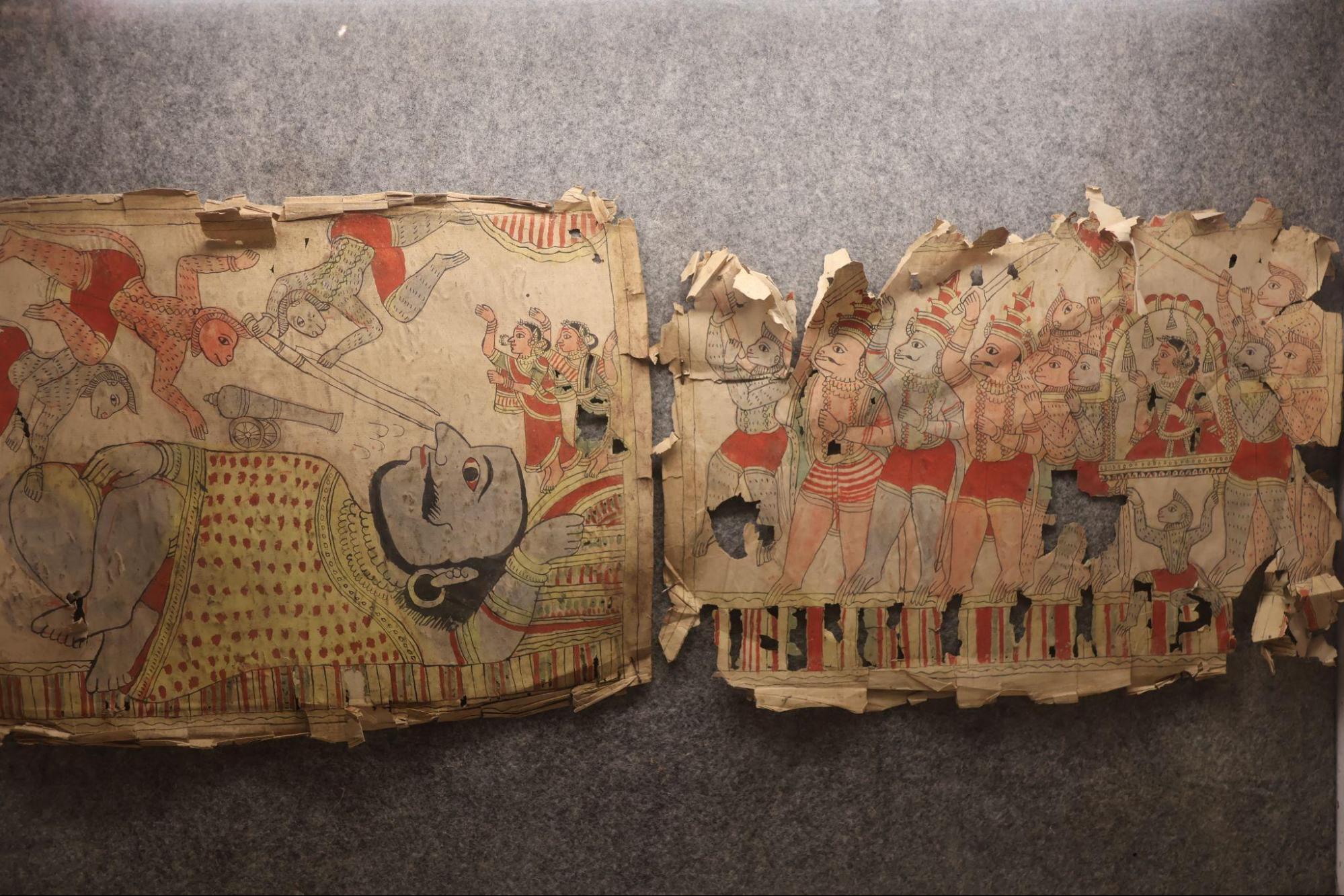
During festivals, Thakar artists perform at night in mandirs, placing a painting or a pothi (set of paintings) before the audience and narrating stories accompanied by dholki (drum) beats and songs. Chitrakathi gained prominence during the time of Chhatrapati Shivaji Maharaj and later received further patronage under Raja Khem Sawant of Sawantwadi.
Pangul Bail
Pangul Bail is a traditional custom of the Thakar community, similar to the Nandibail tradition seen in other parts of Maharashtra. In this practice, Thakars visit homes with decorated bulls, displaying their art and cultural expression. The tradition includes music, movement, and community offerings of grain in appreciation of the artists’ efforts.
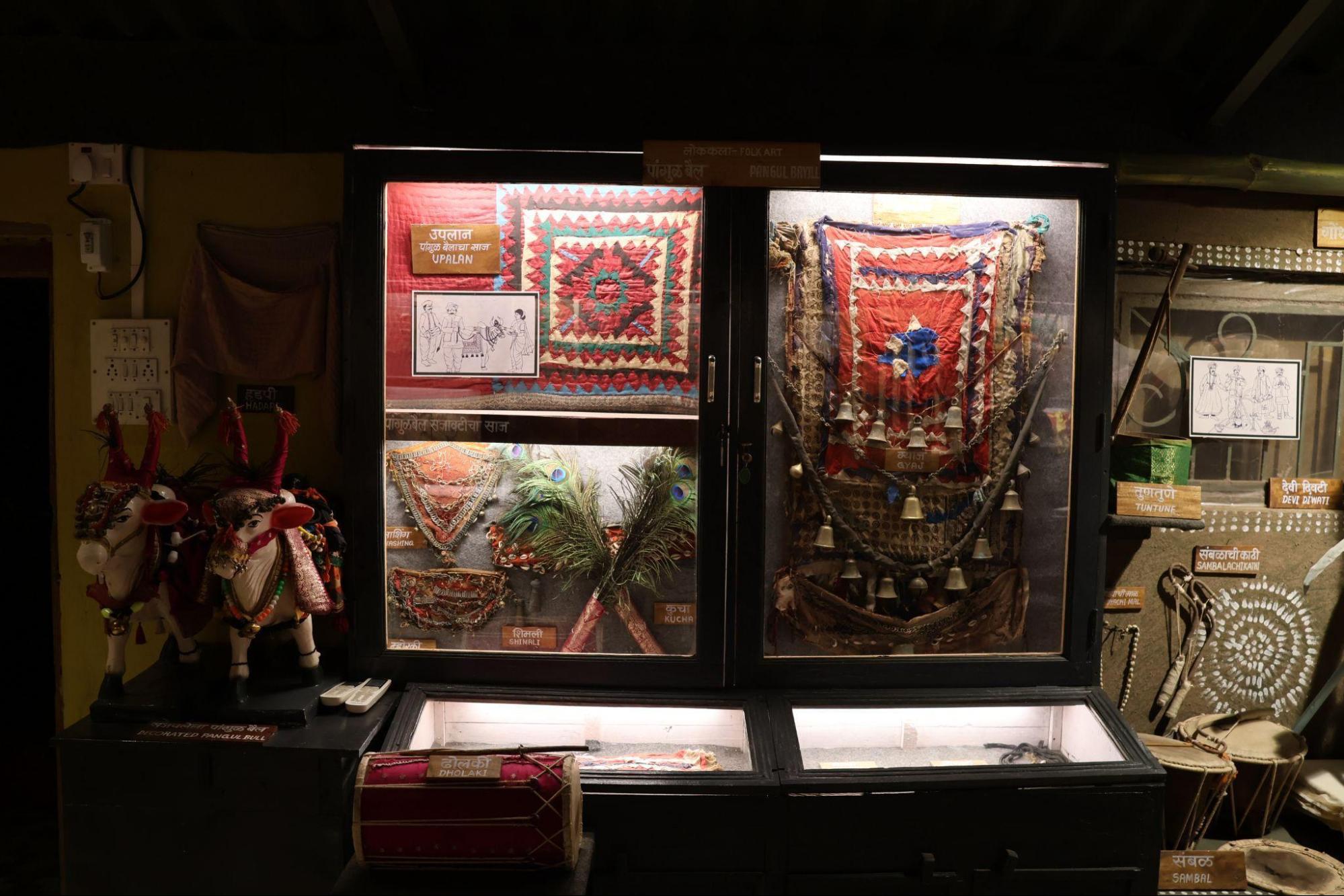
Pingali
Pingali is Pinguli’s regional form of the Vasudev art form. In local traditions, Vasudev is seen as a bhakt of Bhagwan Krishna, who travels from village to village narrating stories from Krishna’s life. He sustains himself by entertaining and engaging the community through his oral performances. These performances are accompanied by everyday objects repurposed for storytelling, such as the doour (drum), dawali (pot), arada (grinding board), and painted nagobachya paati, all of which play a role in creating rhythm, sound, and visual interest.
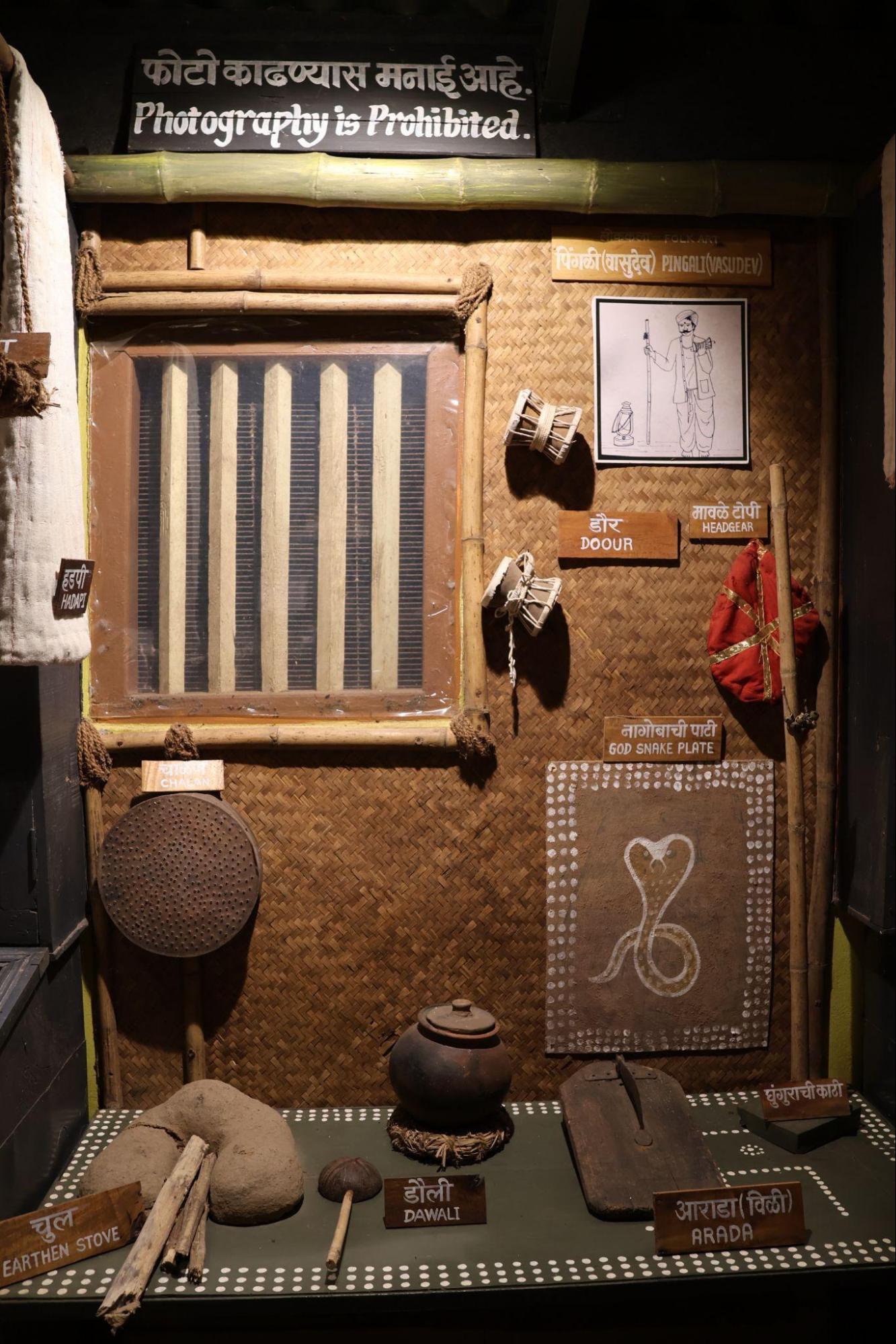
Gondhal
Gondhal is a performance involving dramatic narration of folk legends by an ensemble of two or more singer-narrators. According to locals, when Vijaydurg was renovated by Chhatrapati Shivaji Maharaj, the Thakar community was invited to perform the Gondhal ceremony. Pleased with their performance, Shivaji Maharaj inquired about their identity and way of life, granting their art form special recognition and cultural significance. These performances are accompanied by ritual instruments and objects arranged around the Gondhalacha Maand, including sambal drums, devi diwati (ritual lamp), tuntune (stringed percussion), zanja (cymbals), and gungaroo (ankle bells), all of which play a role in enhancing the rhythm and atmosphere of the ritual.

Radha Nritya
Radha Nritya is a local dance form that tells stories through music and movement. In the Konkan region, it is known as Naman in Ratnagiri, and as Radha Nritya in Sindhudurg. Though the styles vary slightly across regions, they all reflect the community’s artistic expression and deep-rooted cultural traditions. Also referred to as Rasalila, this dance portrays the divine love between Krishna and Radha. Through graceful gestures and rhythmic steps, dancers bring to life the playful and romantic episodes of Krishna with Radha and the gopis of Vrindavan.
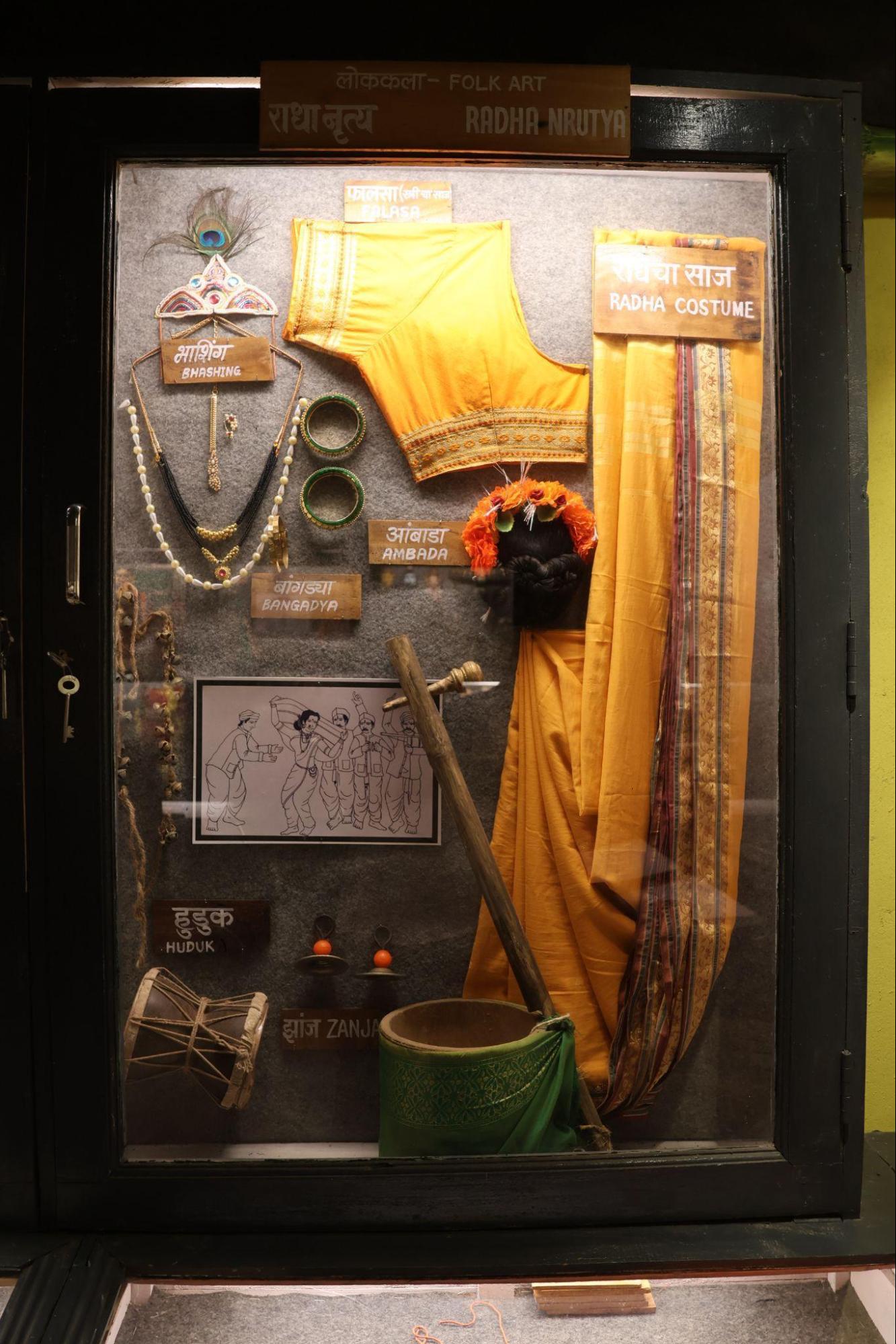
Performances are accompanied by traditional costumes and jewellery, enhancing the visual richness of the dance. Featured elements include jewellery like bashing and bangadya, hair accessories such as ambada (a bun decorated with flowers), and the distinctive Radha costume. Instruments like the huduk drum and zanja (cymbals) provide the musical backdrop, while illustrated sketches often depict scenes from the performances, capturing the vibrant energy of this enduring folk tradition.
Powada
Powada performances are known for their powerful narrative style, often recounting tales of valor and historical significance that resonate deeply with local culture. In Sindhudurg, these performances are accompanied by traditional instruments like the Huduk, Tambora, and Taal.
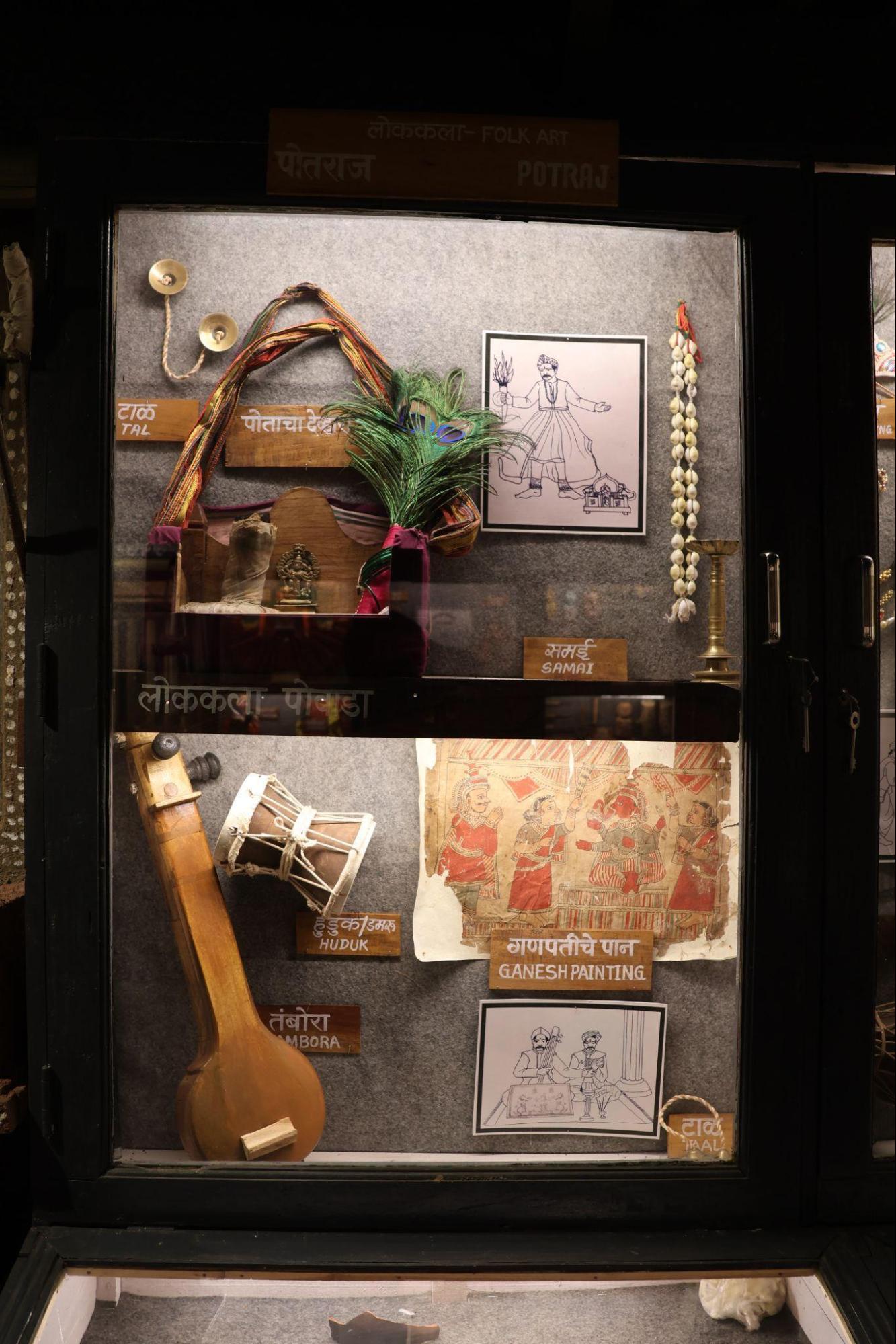
Kalsutri Bahulya
Kalsutri, or puppetry, is a traditional art form of the Thakar community, practiced in two main forms: string puppetry and shadow puppetry. In Pinguli, the string puppets are made from wood and dressed in detailed costumes. Though similar to Rajasthan’s kathputali style, Pinguli puppets are different as they are not made of cloth and wool. Exhibits of Kalsutri Bahulya showcase this craftsmanship, displaying both puppet body parts and complete figures.

Shadow Puppetry
In addition to string puppetry, the Thakar community craft shadow puppets entirely by hand from leather. These puppets are created by beating the leather into thin, firm sheets and intricately cutting them into designs that represent various characters. During performances, a stone lamp placed behind a white cloth illuminates the puppets, casting enchanting silhouettes for the audience.Themes range from tales to local socio-political issues.
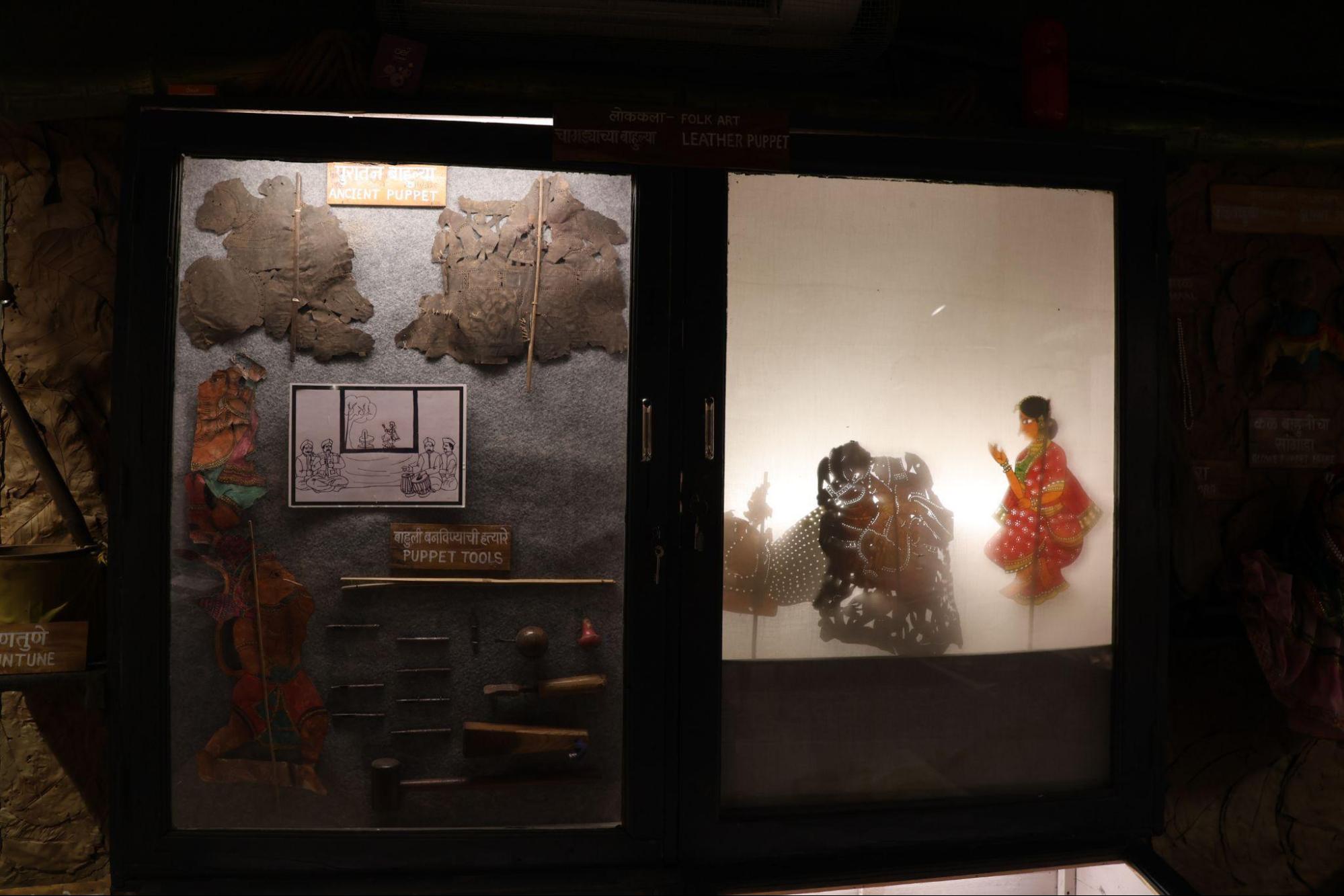
Despite their heritage, the Thakar indigenous community has faced challenges in the modern era. Many performers felt humiliated when they had to ask for money for their night performances, often being labeled as beggars. This stigma led to a decline in pride for their ancient art forms, prompting some members to seek modern ways to earn a living. As a result, these traditional art forms are at risk of fading away in the 21st century.
Handicrafts
Wooden Art
Sawantwadi is renowned for its distinct tradition of wooden art, which includes beautifully crafted toys and keychains. This craft has deep historical roots, tracing back to Raja Khem Sawant, who is believed to have brought artisans from Bori village in Goa to the region. These artisans settled in the Chittarali area of Sawantwadi, where their craftsmanship flourished.
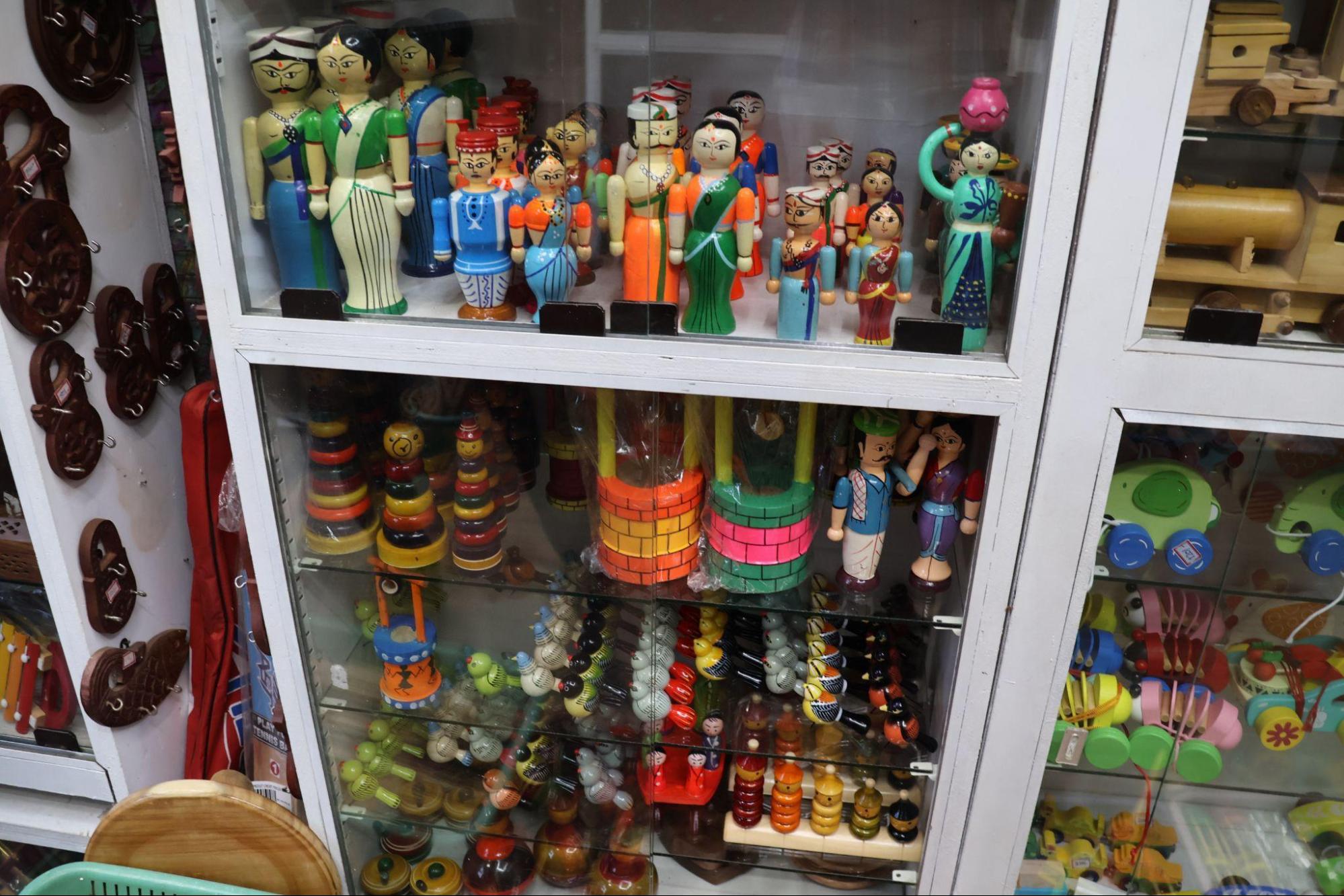
However, today, they face significant challenges. As lifestyles change and consumer preferences shift towards plastic and synthetic products, sustaining this traditional craft has become increasingly difficult for these artisans.
Ganjifa
Ganjifa is a traditional card game made using hand-painted cards on paper or wood. Each card features detailed designs that reflect local culture. In Sawantwadi, it is known more for its craftsmanship than gameplay.
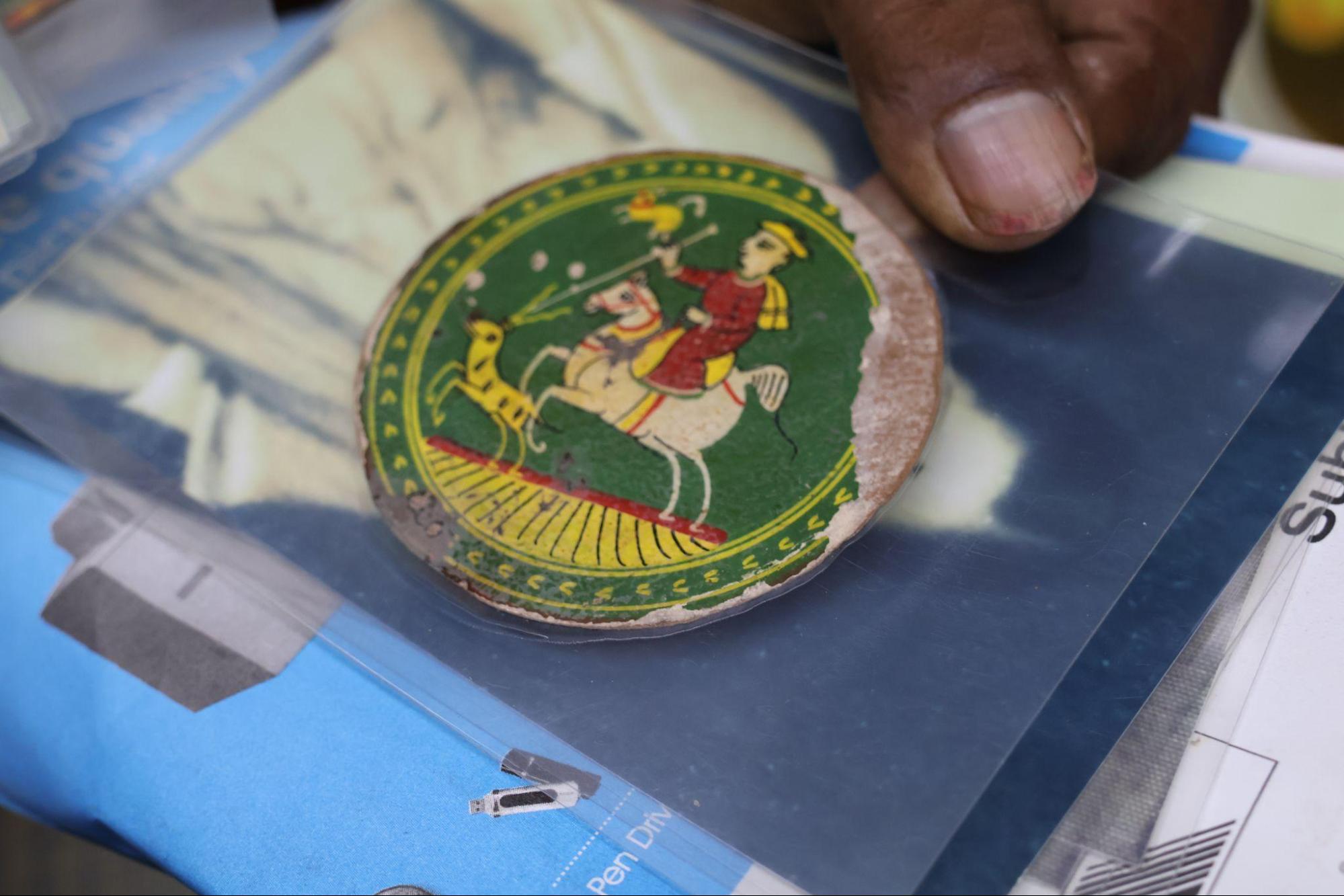
Ganjifa has its roots in the Vijayanagara period, when soldiers settled in the Konkan region, especially in Sawantwadi. The art flourished in the 17th century under Khem Sawant III. Brahmins from Telangana were invited to the region and brought advanced wood and painting techniques that improved Ganjifa card-making. The cards were used for both religious and recreational purposes and became part of local culture.
There are mainly two types of Ganjifa decks: Dashavatari and Kangkanchan. Today, however, these hand-painted wooden cards face competition from modern printed cards. As demand declines, the tradition is at risk. Supporting local artisans is key to keeping this art form alive.
Creative Spaces of the District
Thakar Adivasi Kala Angan (TAKA), Pinguli
The Thakar Adivasi Kala Angan (TAKA) Museum, located in Pinguli, was established in 2006 by Shri Parshuram Vishram Gangavane, a Padma Shri awardee and traditional Thakar storyteller. The museum was founded to preserve and promote the 500-year-old art traditions of the Thakar indigenous community, especially the endangered Chitrakathi storytelling style.
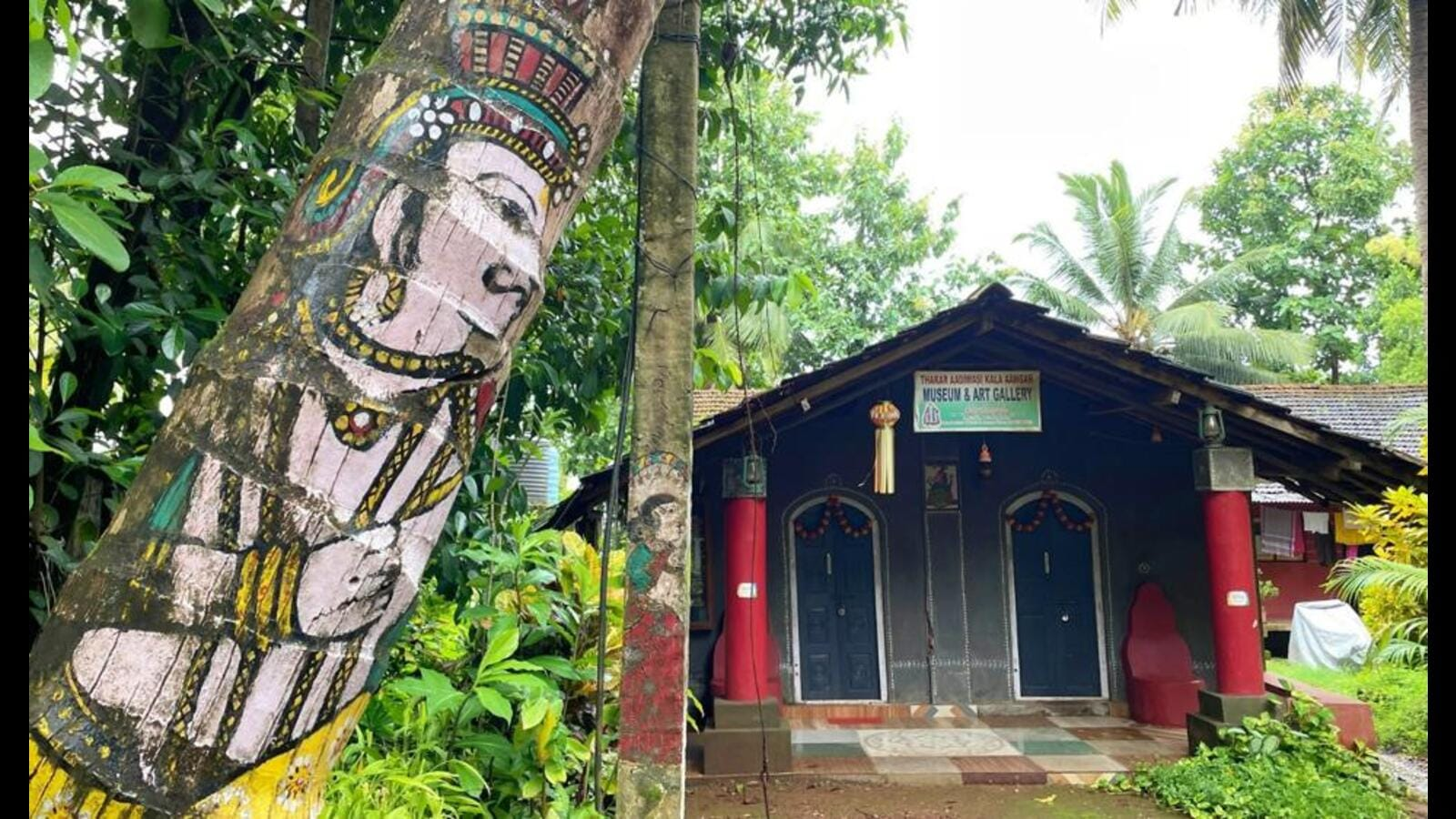
The museum showcases a rich collection of Thakar art forms, including puppetry, Chitrakathi paintings, and cultural artifacts. It also functions as a training space where local artists continue these traditions through the Guru-Shishya Parampara.
Instruments
Wata
The Wata is a distinct musical instrument that doubles as a traditional meal plate. Crafted from natural materials, it features a layer of wax residue left from honeycombs after the honey has been extracted. This sticky wax surface serves a dual purpose: it enhances the dining experience and provides a unique sound quality.
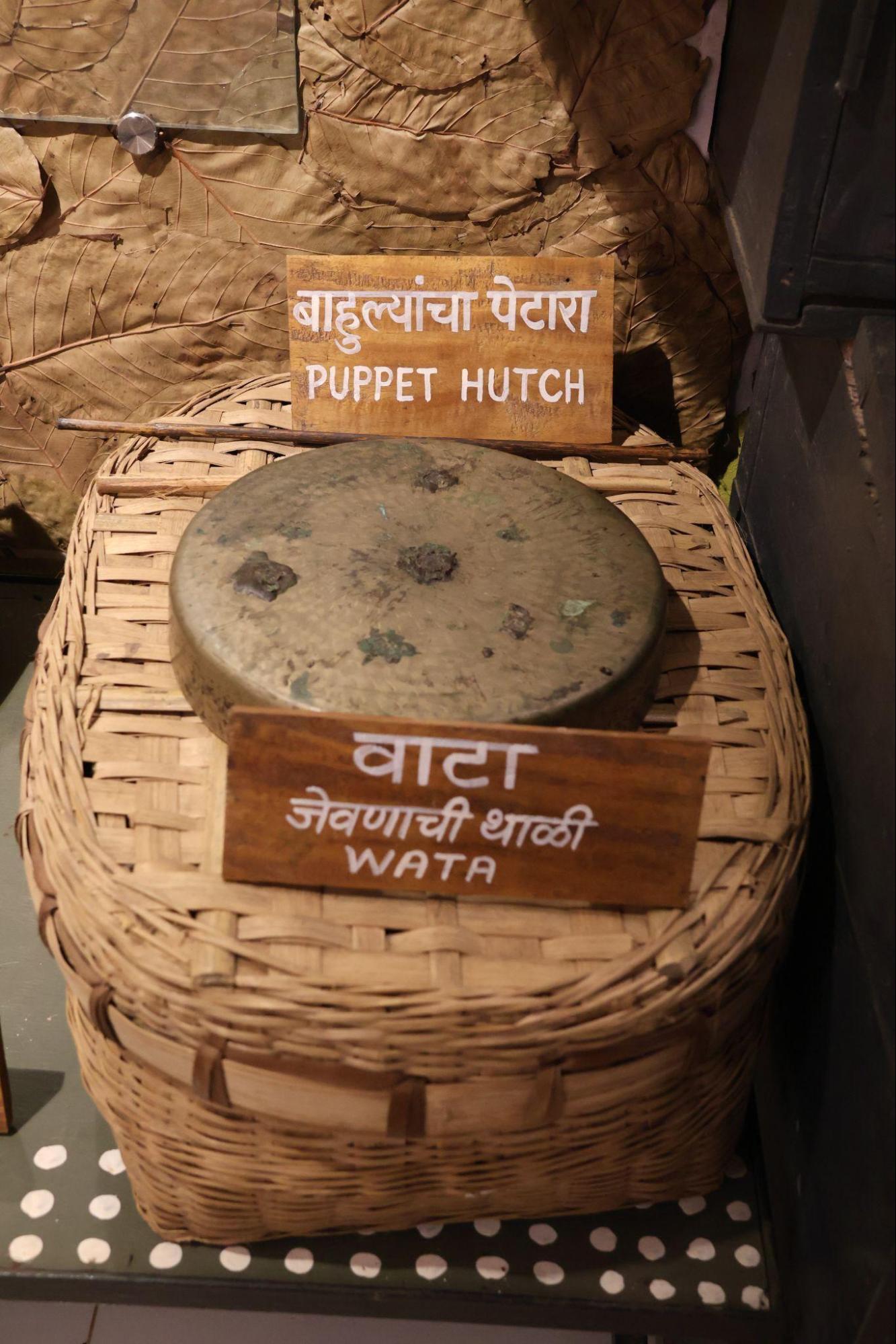
To play the Wata, a stick, typically made from the wild okra plant, is placed against the wax. When pressed down with two fingers, it produces a resonant and captivating sound.
Tambora
The Tambora is a traditional percussion instrument central to Thakar cultural performances. Crafted from wood, it is often decorated with intricate carvings. Played either by hand or with sticks, the Tambora produces deep rhythmic tones that accompany dance, rituals, and storytelling.
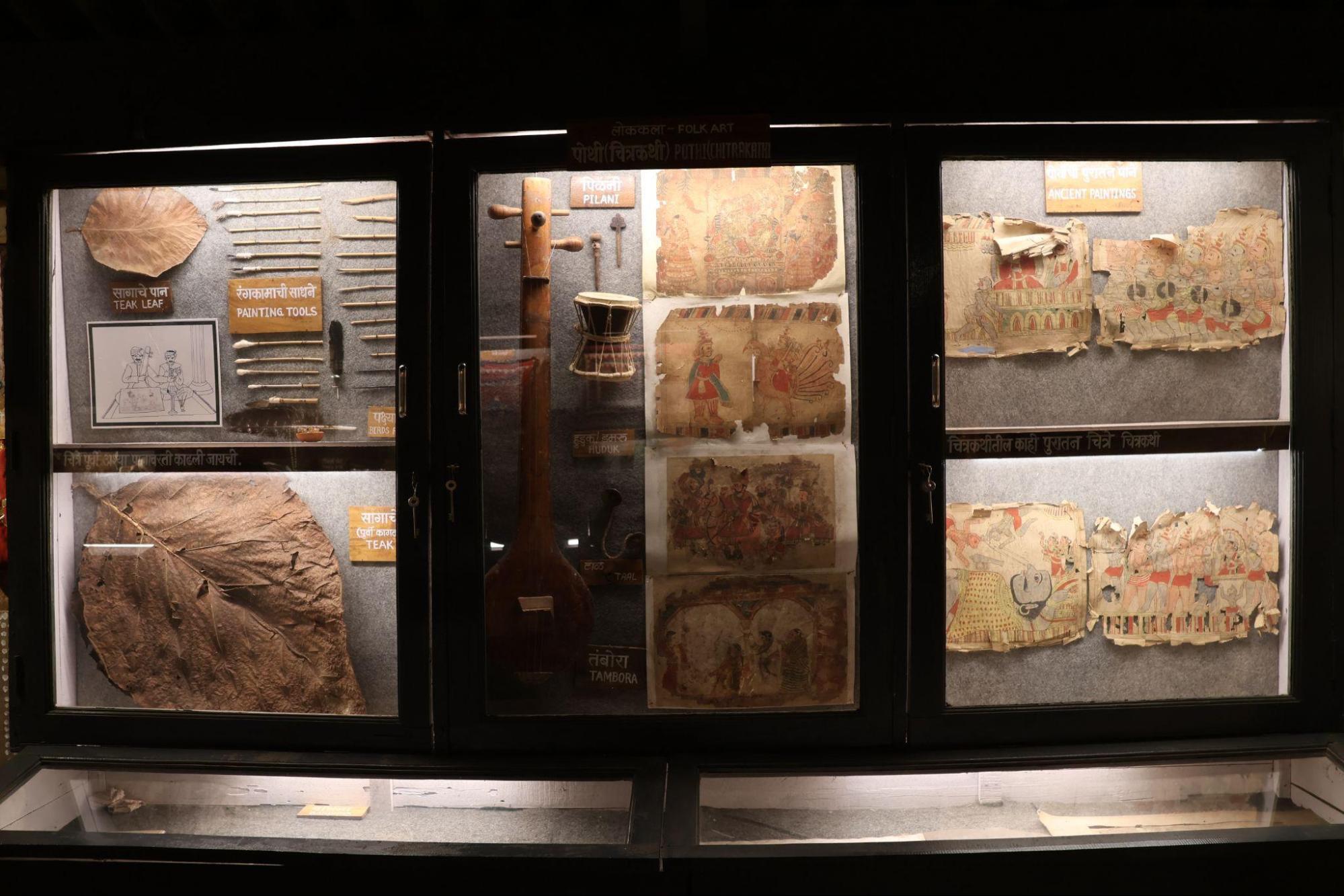
Dholaki
The dholaki is a key percussion instrument, played during festivals, rituals, and celebrations. Its lively beats invite dance and community participation. Along with the tambora, it is central to Thakar performances and cultural expression
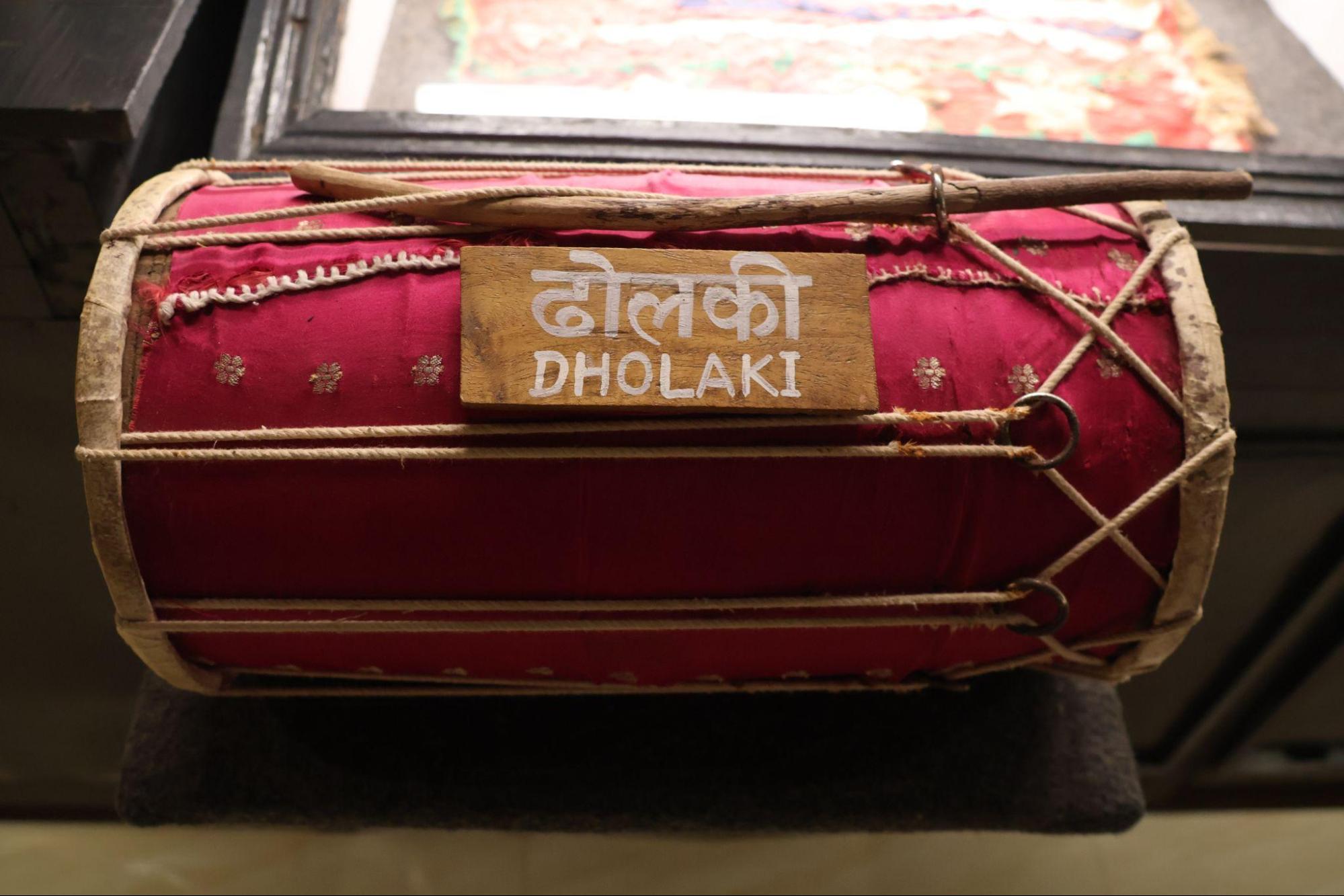
Artists
Machhindra Kambali
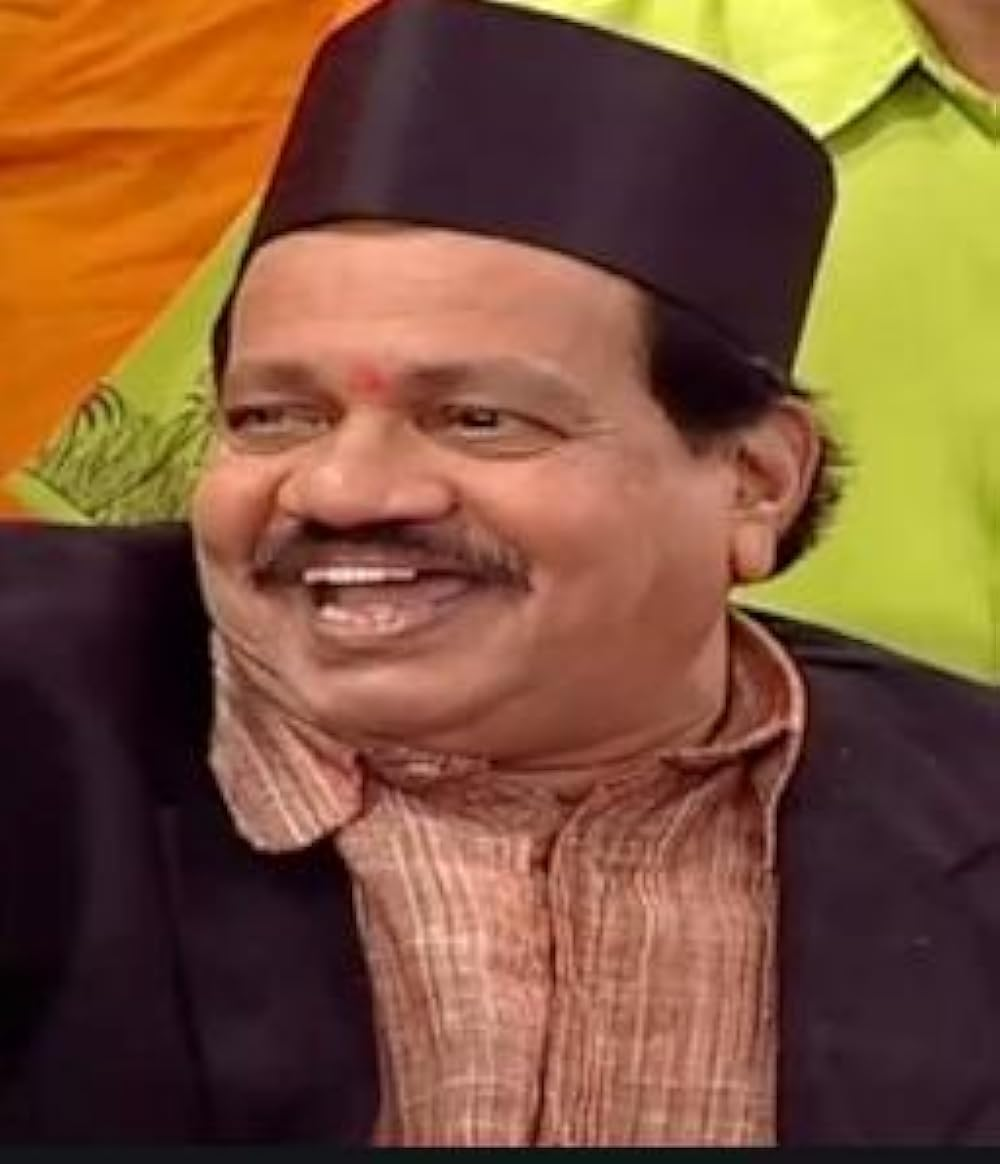
Machhindra Kambali was a key figure in Malvani theater. Known for using the Malwani dialect in plays like Vastraharan, he helped make local theater more relatable and popular in the Konkan region. His work strengthened regional performance traditions such as Dashavatari, Songe, and Bharude, and brought new life to Marathi theater through a local lens.
Parshuram Gangawane
Shri Parshuram Vishram Gangavane is an artist who has devoted his life to preserving the traditional art forms of the Thakar community since 1975. Born on 1 June, 1956, in Kudal, he learned over ten traditional arts from his father, including Chitrakathi, Kalsutri Bahulya, and Leather Puppetry.
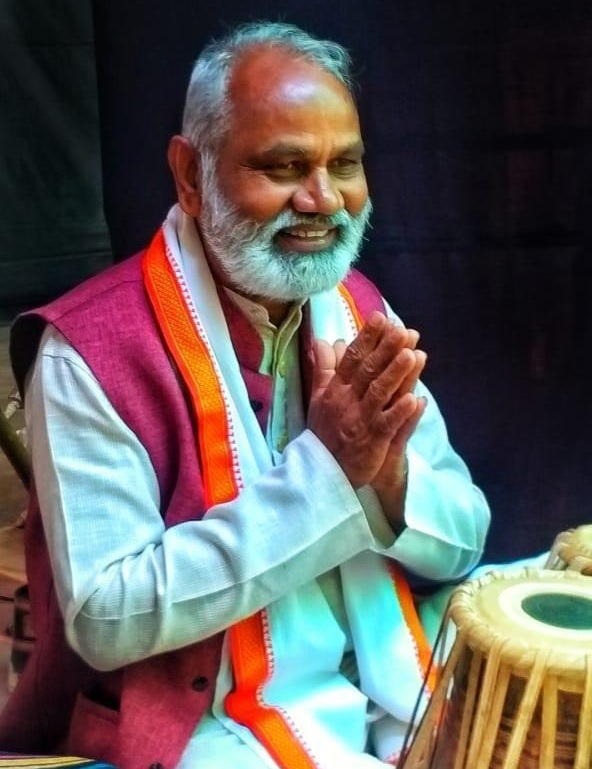
Growing up in Pinguli village, Parshuram began performing Kalsutri puppet shows at age 12, enchanting audiences with captivating folk tales. His passion for encouraging and preserving these artforms led him to transform his cowshed into a museum that showcases Chitrakathi art and offers various traditional crafts for sale.
In recognition of his efforts, Parshuram was honored with the Padma Shri award in 2021. As the founder of TAKA (Thakar Adivasi Kala Angan), he has played a pivotal role in revitalizing and promoting arts of the Thakar indigenous community.
Ganpat Masage
Shri Ganpat Sakharam Masage, born in 1958 in Pinguli, is a traditional puppeteer trained by his father, Bhikaji Sakharam Masage. He mastered Kalsutri Bahulya (string puppetry), Chitrakathi (storytelling through pictures), and Chamdayacha Bahuliya (leather puppetry). He formed his own troupe, designing puppets and costumes, and helped bring Kalsutri Bahulya wider recognition across India.
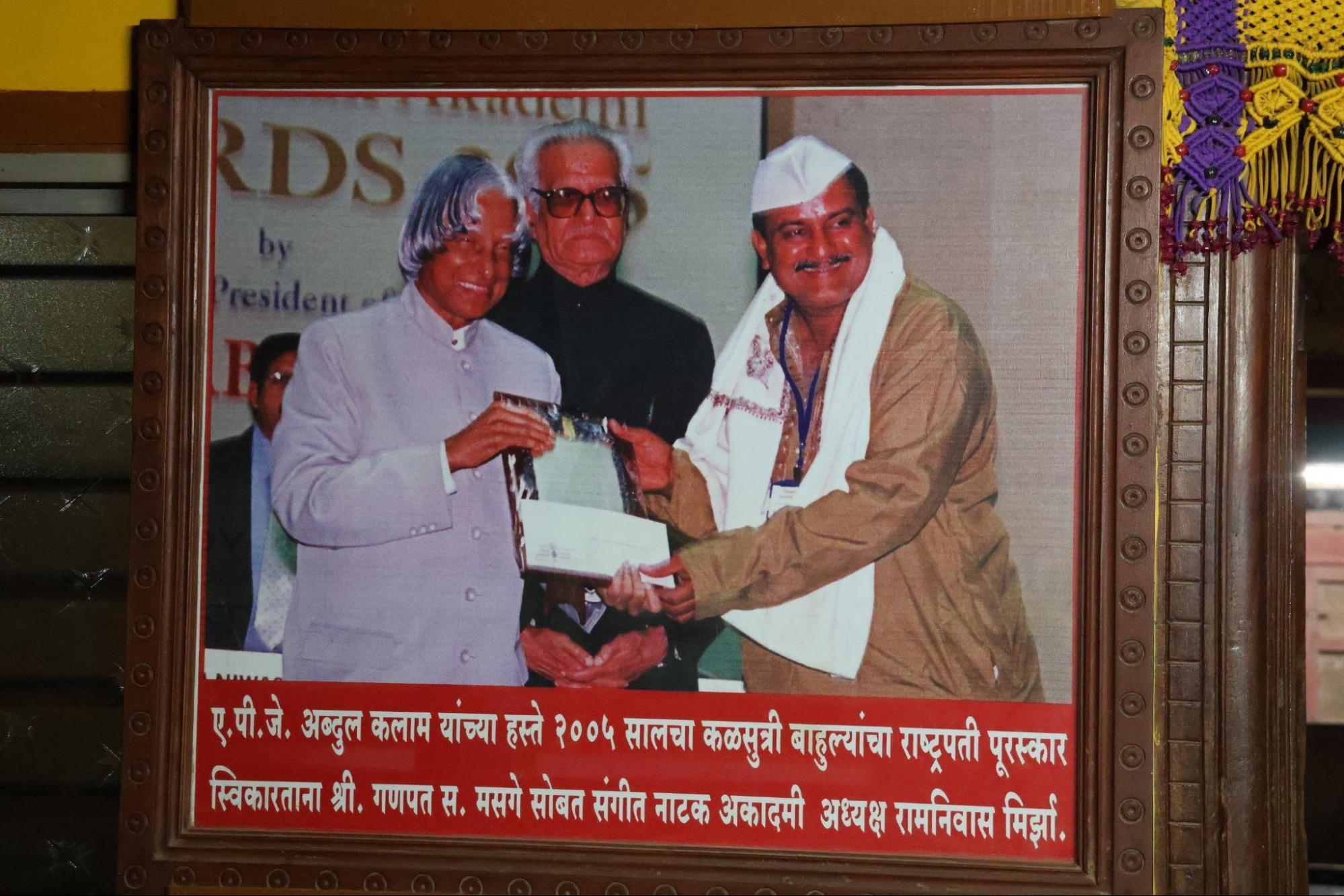
Jayawant Dalvi
Jaywant Dalvi was a renowned Marathi writer and playwright, celebrated for his impactful and socially relevant work. Born on August 14, 1925, in Aravali, Sindhudurg. Dalvi made significant contributions to Marathi literature with his novels, short stories, and plays. His writing often explored the complexities of human relationships and societal issues, portraying them with sensitivity and realism.
![Jayawant Dalvi[5]](/media/culture/images/maharashtra/sindhudurg/artforms/jayawant-dalvi5-fd22fccf.png)
Jaywant Dalvi was a prominent Marathi writer known for plays like Chani, Pratidwandi, Barrister, Mousam, Suryasta, and Sandhyachhaya. His works tackled contemporary issues with strong storytelling and social insight. He received the Sahitya Akademi Award and is remembered for his emotional depth and lasting impact on Marathi literature.
Mangesh Padgaonkar
Mangesh Padgaonkar was a renowned Marathi poet and author, born in Vengurla, Sindhudurg in 1929. He received Padma Bhushan, Maharashtra Bhushan, and Sahitya Akademi awards for his work.
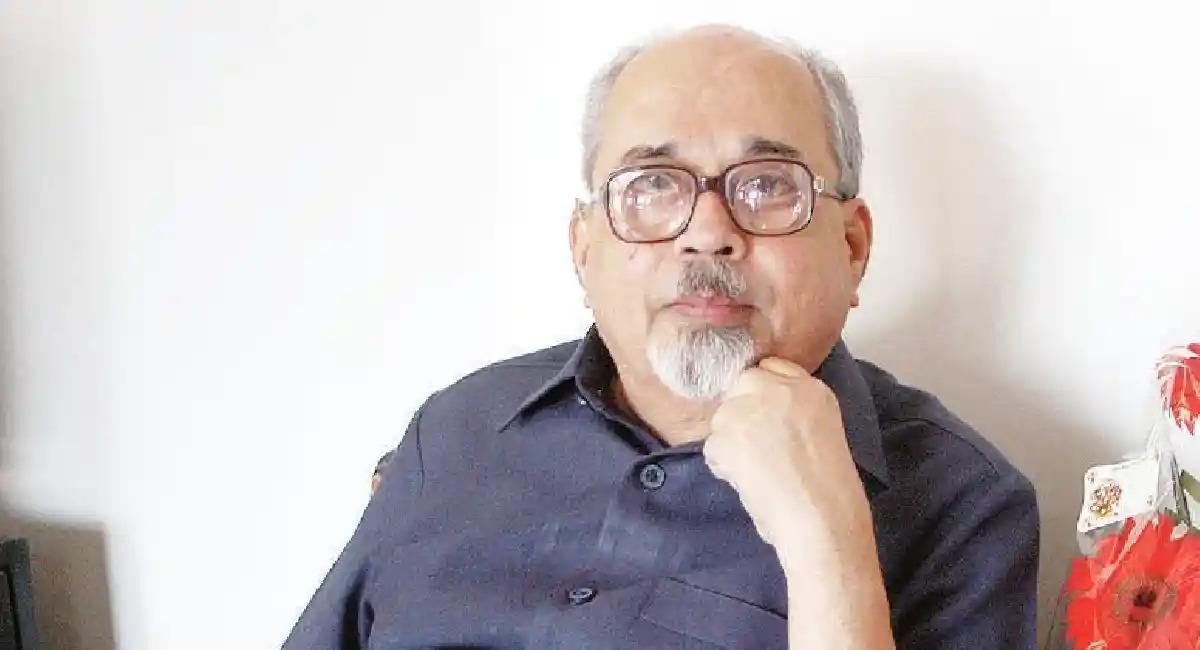
Some of his notable works include "Jipsi," "Udasbot," "Vatratika," "Moru," "Trunparne," and "Anandache Dohi." Padgaonkar's poetry is celebrated for its emotional depth and lyrical beauty, making a significant impact on Marathi literature.
Sources
Chetan and Livia Rao. 2018. Thakkar Art at Adivasi Kala Angan, Pinguli. The Re-Discovery Project.https://rediscoveryproject.com/2018/03/04/th…
Dennis Kennedy. 1993. The Evolution of Indian Puppetry. TDR (1988–), Vol. 37, No. 1. MIT Press.https://www.jstor.org/stable/3249740
Dnyan Ganga Books. Jaywant Dalvi – Books Collection. Accessed 2025.https://dnyangangabooks.com/collections/jayw…
Gopi Karelia. 2021. Padma Shri Awardee Revives 500-YO Art That Helped Chhatrapati Shivaji Fight Battles. The Better India. https://thebetterindia.com/259890/parshuram-…
IMDb. Jaywant Dalvi – Filmography. Accessed 2025.https://www.imdb.com/name/nm8646848/
Indian Express. 2016. Veteran Marathi Poet and Padma Award Recipient Mangesh Padgaonkar Passes Away. Indian Express, India.https://indianexpress.com/article/india/indi…
Maharashtra Tribal Museum Blog. 2022. Padmashri Parshuram Gangavane.https://maharashtratribalmuseum.blogspot.com…
Marathi Vishwakosh. Mangesh Padgaonkar. Accessed 2025.https://marathivishwakosh.org/53768/
Sourav Roy. 2012. Traditional Storytelling in India: A Case Study of Chitrakathi Art. Chitrolekha International Magazine on Art and Design. Vol. 2, No. 2.https://chitrolekha.com/ns/v2n2/v2n203.pdf
Last updated on 22 July 2025. Help us improve the information on this page by clicking on suggest edits or writing to us.